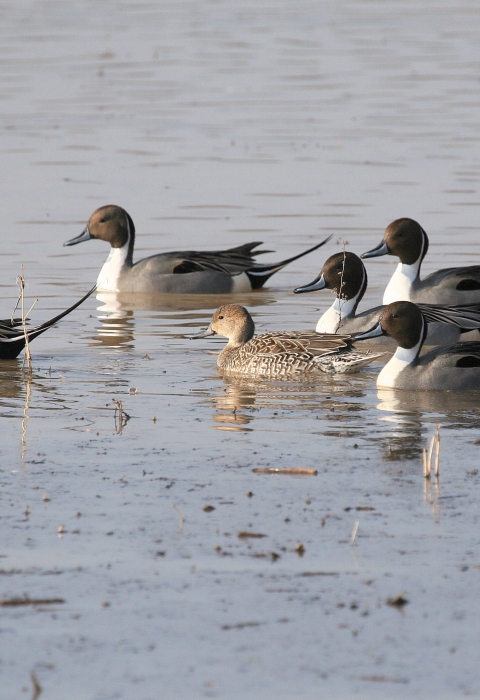Overview
Often described as elegant or handsome, the northern pintail is known for their long slender neck and long central tail feathers. These ducks migrate earlier than many other species of dabbling ducks reaching the breeding grounds as soon as the ice melts.
Identification Numbers
Characteristics
Habitat
During the breeding season, northern pintail nest primarily on the ground in grasslands, but they also nest in fallow croplands and winter wheat fields. Northern pintail migrate earlier than many other species of dabbling ducks, and they use primarily open wetlands including flooded portions of agricultural fields and coastal marshes.
Ecosystem with large, flat areas of grasses.
Physical Characteristics
Males make a distinct wheezy whistle. Females have a course quack.
Male have a white chest and a white pin stripe that runs up their dark brown neck and head. The central tail feathers are long, black, and form a point. Females are a mottled brown to brown-gray.
Measurements
Length: 20 to 30 in (51 to 76 cm)
Wingspan: 34 in (86.4 cm)
Life Cycle
Like other species of ducks, the females create a grass nest lined with down feather. However, unlike other ducks, these nest are often built a distance away from water. Females lay six to nine pale green eggs.
Food
They are extremely graceful and fast fliers, fond of zig-zagging from great heights before leveling off to land. They are agile on land and are often seen feeding in grain fields.
Geography
Northern pintail typically breed in the Prairie Pothole Region of the north-central United States, central Canada and Alaska. They spend their winters in the southern United States and Mexico, especially along the Texas and Louisiana coasts of the Gulf of Mexico.
